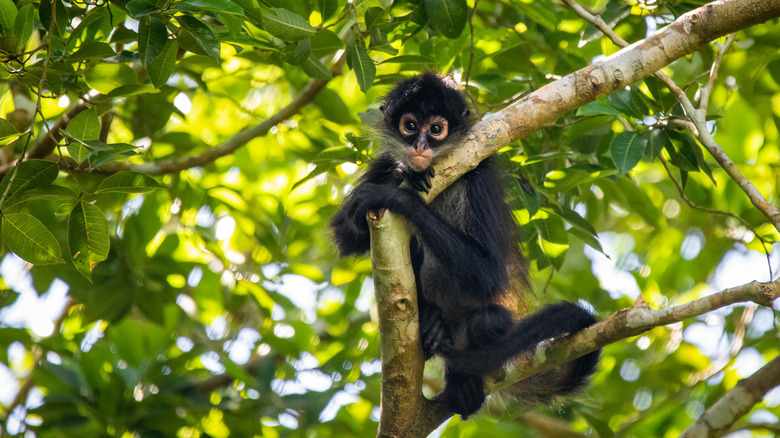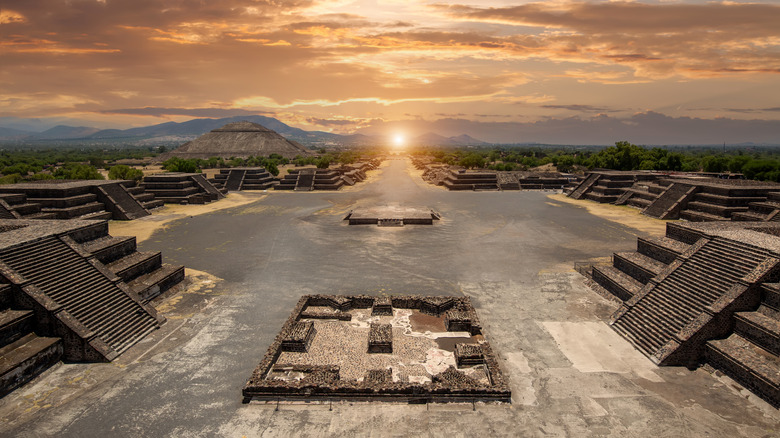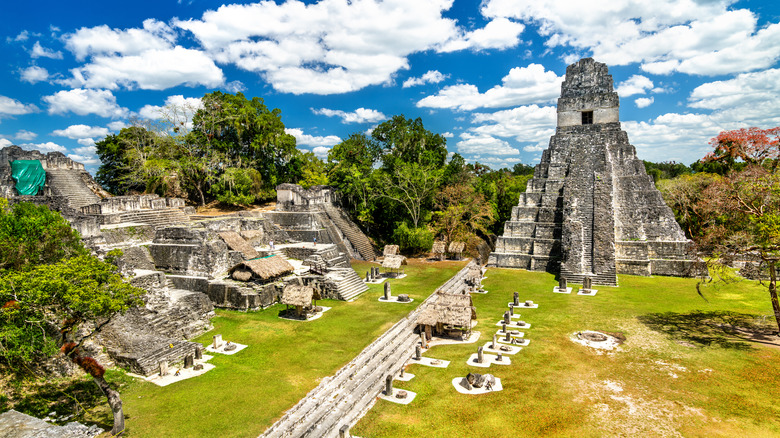A 1,700-Year-Old Spider Monkey Skeleton Revealed How Native Americans Interacted Politically
How do you reassure a potentially dangerous political rival that you can be friends? The Mayan answer: Say it with spider monkeys. An archaeological dig carried out in the ancient city of Teotihuacan appears to confirm that the Mayans sent a gift of friendship to their troublesome northern neighbors (via National Geographic).
The exotic present may have been necessary given the sometimes difficult relationship between the two states. In the 4th century A.D., the ancient Mayan civilization was caught in a power struggle with its rival to the north, Teotihuacan (now on the outskirts of Mexico City). The details are hazy, but at some point a threatening-sounding lord named "Fire is Born" arrived in the Mayan metropolis of Tikal, and unleashed a major political upheaval that dethroned their king (via Smithsonian Magazine).
The nature of the relationship between the two powers leading up to the conquest is unknown, but archaeologists believe the female spider monkey skeleton — found at the base of a pyramid in Teotihuacan — may indicate a period of relative harmony. Spider monkeys cannot live in the dry desert-like region of Teotihuacan, leading researchers to conclude that the animal was a gift from the forested regions of the Maya.
Raised for the slaughter
The bad news is, the unfortunate spider monkey had a fairly sad life once it arrived in Teotihuacan. Archaeological analysis suggests that the animal was kept in captivity for at least two years (via PNAS). Later, it was offered as a bloody sacrifice in some sort of ritual, its hands bound behind its back to restrain it.
The female spider monkey was just one of many animals found in the area, including the remains of a golden eagle, a puma, rattlesnakes, and birds. There were also a number of fine obsidian blades and projectiles, jade from Guatemala (the heart of the Mayan Empire), and sea and snail shells.
This particular treasure trove is just one of many found in the city. Both human and animal sacrifices appear to have been a regular occurrence in Teotihuacan (via National Geographic). Back in 2004, a tomb was found containing 12 decapitated humans, as well as pumas, wolves, and eagles, inside the pyramid of the moon, a significant ritual site in the city (via New Scientist).
How to win friends and influence Mesoamerican civilizations
The date of the monkey grave site (approximately A.D. 250-300), indicates that the exchange took place long before military force was used by one power against the other (via National Geographic). Speaking with Science magazine, Mayan archaeologist Ashley Sharpe commented, "I know this is just one monkey, but this is an indication that it seems their early interactions were somewhat peaceful and amicable."
The monkey skeleton is just one of a string of finds that seem to confirm a complex and peaceful diplomatic relationship between the rival civilizations. The "Plaza of the Columns" site where the spider monkey was found has produced a wealth of evidence that suggests Mayan elites once lived in the city (via Chichen Itza). In Mayan lands, on the other hand, excavations at Tikal in 2021 unearthed precious goods, foreign gods, and exotic weaponry, all from Teotihuacan (via Smithsonian Magazine).
While we might consider a spider monkey an odd gift, they are likely to have been an exotic curiosity for the Teotihuacans, and the Mayans themselves appear to have been quite fond of them — frequently depicting them in their artwork.


